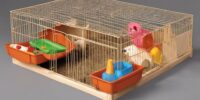What Is the Difference Between Macaws and Cockatoos?
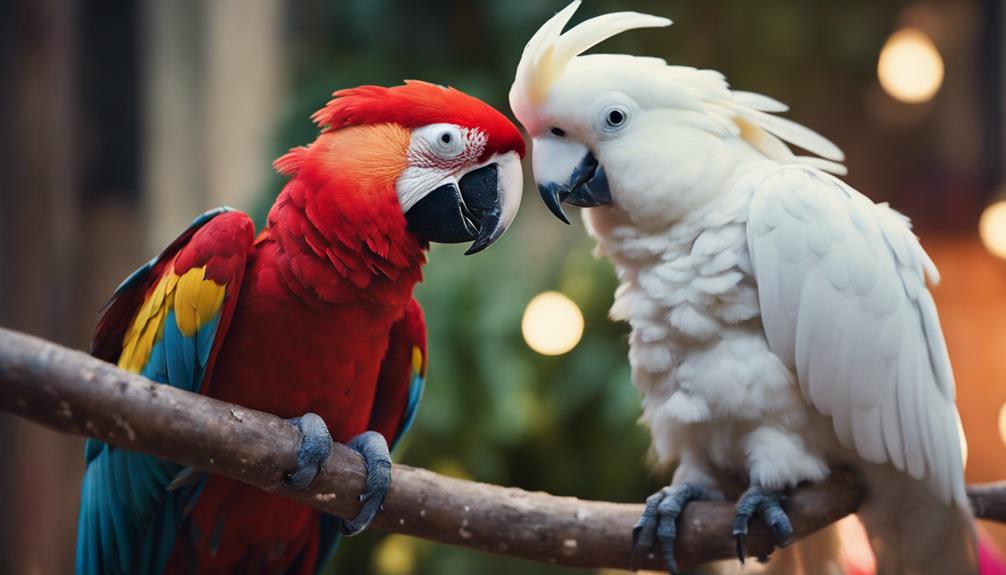
Macaws are known for their vibrant plumage and large size.
Cockatoos are recognized for their crest of feathers and affectionate nature.
Key Takeaways
- Macaws are native to Central and South America, while Cockatoos are predominantly found in Australia.
- Macaws have vibrant plumage colors, whereas Cockatoos are usually white or pinkish.
- Macaws thrive in rainforests, while Cockatoos favor open habitats like grasslands.
- Macaws exhibit loud calls, while Cockatoos produce diverse sounds from whistles to human-like noises.
Physical Characteristics
Macaws and Cockatoos exhibit distinct differences in their physical characteristics, which play a crucial role in distinguishing between these two captivating bird species.
Macaws, known for their vibrant plumage colors, range in length from 12 to 40 inches, making them relatively easy to spot due to their larger size compared to Cockatoos. The Hyacinth Macaw, the largest of the macaw species, stands out for its impressive size within the parrot family.
On the other hand, Cockatoos, usually white or pinkish in color, have a length variation of 12 to 20 inches. One of the top breeds of Cockatoos, the Sulphur-crested Cockatoo, is recognized for its striking yellow crest. This crest, unique to Cockatoos, adds to their distinctive appearance and is a key characteristic to keep in mind when differentiating between these two popular bird species.
Natural Habitat
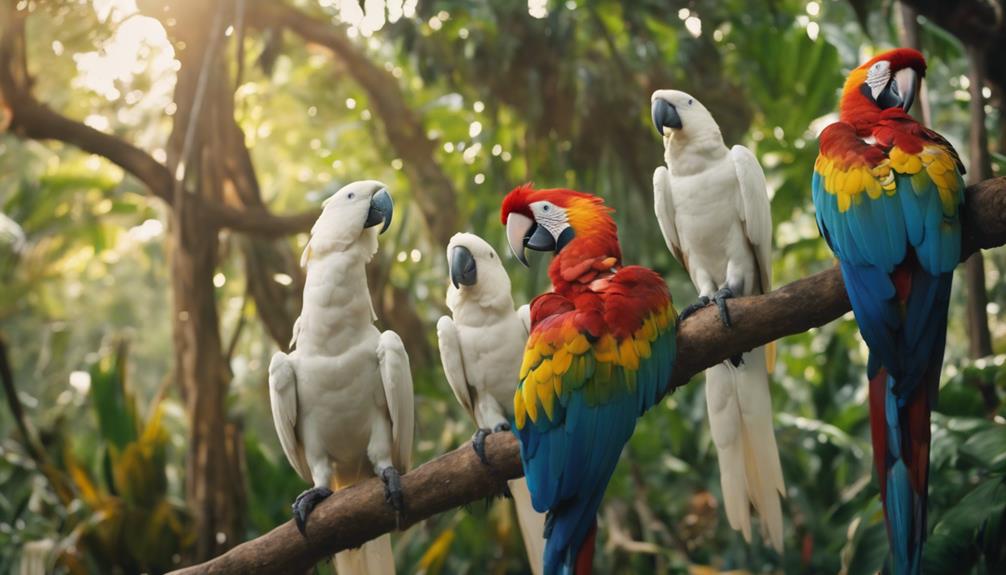
Macaws, native to Central and South America, thrive in the diverse environments of rainforests, where they’ve access to a variety of fruits, nuts, and seeds.
In contrast, cockatoos, predominantly found in Australia and nearby regions, flourish in open habitats like grasslands, savannas, and scrublands, where they can forage for seeds, roots, bulbs, and insects.
These distinct natural environments play a crucial role in shaping the behaviors and adaptations of macaws and cockatoos in their respective habitats.
Macaws’ Habitat Features
In their natural habitat of Central and South America, Macaws thrive amidst the lush greenery of tropical forests, woodlands, and savannas. These vibrant birds are commonly found in regions like the Amazon Rainforest and the Pantanal wetlands, where they prefer areas with tall trees for nesting and roosting. Access to water sources for drinking and bathing is essential for their well-being. The diverse range of foods available, including fruits, nuts, seeds, and vegetation, caters to their dietary needs. Macaws have evolved to adapt to the warm and humid climate of their habitat, showcasing a remarkable ability to thrive in the midst of abundant biodiversity.
| Habitat Features | Description | Importance |
|---|---|---|
| Tropical Forests | Provide shelter, nesting sites, and abundant food sources for macaws. | Vital for survival |
| Woodlands | Ideal for roosting and finding nuts and seeds, essential components of their diet. | Supports dietary needs |
| Savannas | Offer diverse vegetation and open spaces where macaws can socialize and forage. | Encourages social behavior |
Cockatoos’ Natural Environment
Thriving in the diverse landscapes of Australia and nearby regions, Cockatoos inhabit a range of natural environments from grasslands to coastal regions, displaying remarkable adaptability to various habitats. These birds are commonly found in eucalypt forests, savannas, and even urban areas. Cockatoos showcase nesting behavior by creating tree hollows for shelter and breeding, demonstrating their intelligence and resourcefulness.
Their foraging habits include consuming a variety of food sources such as seeds, nuts, fruits, and vegetation, making them well-suited to the Australian landscape. Aviary enrichment is crucial for captive Cockatoos to mimic their natural behaviors and ensure their mental and physical well-being.
Vocalizations and Sounds
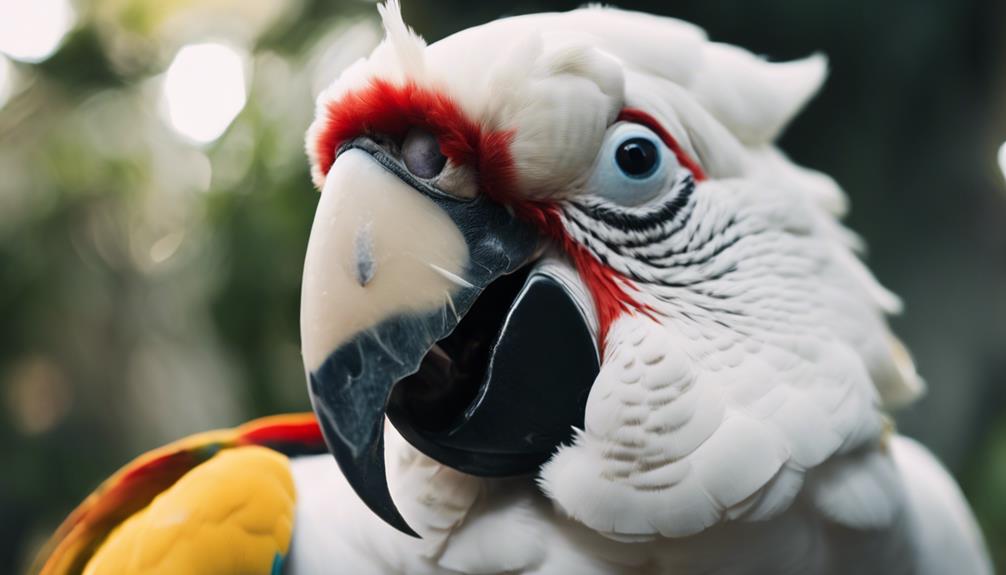
Macaws and Cockatoos both exhibit fascinating vocal abilities, each species with its unique set of vocalizations and sounds. Macaws are renowned for their loud, far-reaching calls that echo through their habitat, while Cockatoos showcase a diverse repertoire of sounds ranging from whistles to human-like noises.
Understanding the distinct vocalizations of these birds sheds light on their communication methods and behavioral expressions.
Unique Vocalizations
Among the distinguishing features of these avian species are their unique vocalizations, with Macaws emitting loud, squawking calls that carry over long distances and Cockatoos showcasing a diverse repertoire ranging from screeches to softer whistles and chatter. Both Macaws and Cockatoos exhibit remarkable mimicry abilities, with Macaws mastering human speech and sounds, while Cockatoos excel at imitating various noises and tunes. In terms of communication styles, Macaws lean towards clear enunciation of words and phrases, whereas Cockatoos display a talent for picking up household sounds effortlessly. When it comes to sound recognition and vocal learning capabilities, both species demonstrate an aptitude for associating sounds with specific meanings and adapting their vocalizations accordingly.
| Macaws | Cockatoos |
|---|---|
| Loud, squawking calls | Screeches, screams |
| Mimic human speech | Imitate household noises |
| Clear vocal enunciation | Diverse vocal repertoire |
| Sound recognition skills | Ability to mimic tunes |
Distinctive Sounds
Displaying a rich array of vocalizations, both Macaws and Cockatoos captivate with their distinct sounds that serve various communication purposes and showcase their remarkable mimicry skills.
Macaws are known for their loud, clear vocalizations that aid in long-distance communication and territorial establishment within their flock.
On the other hand, Cockatoos exhibit a diverse range of vocalizations, including screams, whistles, and the impressive ability to mimic human speech.
These behavioral differences highlight the vocalization variations and sound production techniques unique to each species.
While Macaws use vocalizations to express emotions and bond with others, Cockatoos excel in vocal mimicry and auditory displays, often imitating household noises or words through practice and training, facilitating communication patterns within their social groups.
Lifespan and Size

Comparatively, the lifespan and size differences between Macaws and Cockatoos significantly influence the level of commitment necessary for their long-term care and well-being. Macaws can live up to 60 years, surpassing the lifespan of Cockatoos, which generally range between 40 to 60 years. The longevity impact of this variance means potential owners must consider the extended commitment required for Macaws.
In terms of physical traits, Macaws exhibit larger sizes compared to Cockatoos. The Hyacinth Macaw, the biggest macaw species, can grow up to an impressive 40 inches in length, while Cockatoos are notably smaller, ranging from 12 to 20 inches. These size variations not only contribute to the aesthetic appeal of each bird but also have implications for space requirements and handling.
Macaws, weighing between 750 grams to 1.75 kilograms, are heavier than Cockatoos, which typically weigh from 500 grams to 900 grams. Understanding these size and lifespan differences is crucial for individuals considering the ownership of either of these magnificent bird species.
Diet and Feeding Habits

The dietary preferences and feeding habits of Macaws and Cockatoos play a critical role in maintaining their health and vitality, reflecting their distinct nutritional requirements and culinary inclinations.
- Seed Preferences: Macaws love a diet rich in seeds, nuts, fruits, and vegetables, while Cockatoos primarily rely on seeds but need a balanced diet including pellets, fruits, and vegetables for optimal nutrition.
- Nutritional Needs: Macaws need calcium-rich foods for strong beaks and bones, and moderation in seed and nut intake to prevent obesity, while Cockatoos can suffer from obesity if overfed and require a varied diet for overall health.
- Feeding Schedules: Both species benefit from fresh water daily for hydration and a healthy diet to support their overall well-being. Providing the right balance of nutrients is essential for their health and longevity.
- Variety is Key: Offering a diverse array of foods ensures that Macaws and Cockatoos receive the necessary nutrients to thrive, emphasizing the importance of a balanced diet for their well-being.
Social Behavior and Temperament
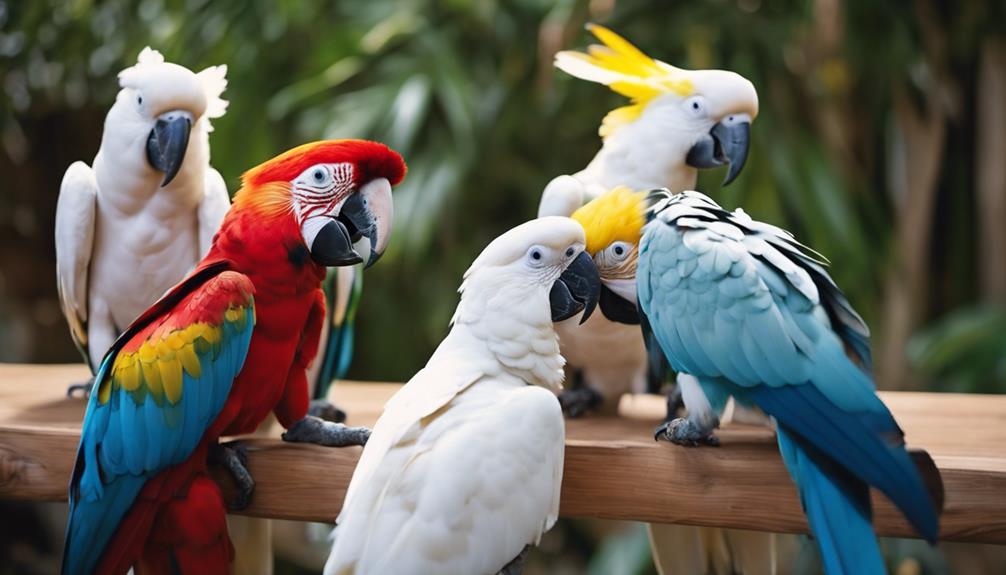
Macaws and Cockatoos exhibit distinctive social behaviors and temperaments shaped by their innate characteristics and interactions within their respective environments.
Macaws are highly social birds that thrive on interaction, both with their human companions and fellow birds. They form strong bonds within their flock, showcasing their need for companionship and socialization. Macaws also display impressive communication skills, being able to mimic human speech and sounds, highlighting their intelligence and sociability.
On the other hand, Cockatoos are known for their affectionate and cuddly nature, seeking physical contact and attention from their owners. Their temperament leans towards being playful, enjoying interactive games and activities with their human companions. Cockatoos bond closely with their owners, showing a preference for engaging in physical interactions for mental stimulation.
While both species require socialization and attention to prevent behavioral issues, Macaws lean towards vocal communication and flock bonding, whereas Cockatoos exhibit a more physically affectionate and playful demeanor in their interaction preferences.
Conservation Status
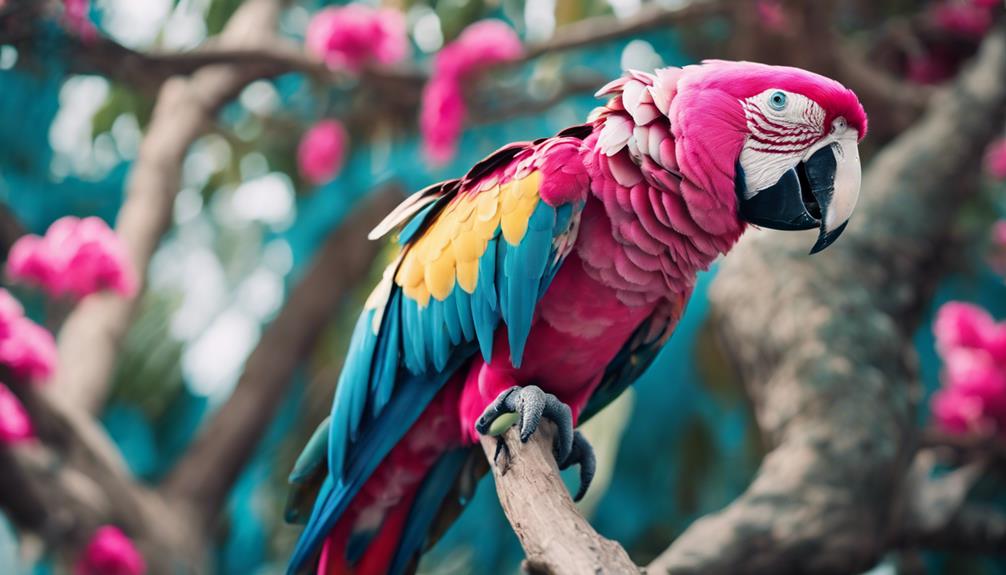
Social behavior and temperament play a crucial role in the conservation status of both Macaws and Cockatoos, influencing their response to threats in the wild. When considering their conservation status, it’s essential to examine the specific challenges each species faces.
- Conservation strategies: Conservation efforts for Macaws and Cockatoos primarily revolve around habitat protection, captive breeding programs, and anti-poaching measures. These strategies aim to safeguard the remaining populations and restore their habitats.
- Threats faced: Both Macaws and Cockatoos confront threats such as habitat destruction, illegal wildlife trade, and climate change. These factors contribute significantly to the decline of these species in their natural habitats.
- Population trends: The population trends of Macaws and Cockatoos vary across species, with some facing severe declines, while others show signs of stability. Understanding these trends is crucial for implementing targeted conservation actions.
- Conservation organizations: Organizations like the World Parrot Trust play a vital role in raising awareness, conducting research, and implementing conservation projects to protect Macaws and Cockatoos from further decline. Their dedication is instrumental in ensuring the survival of these magnificent birds.
Frequently Asked Questions
Are Cockatoos Louder Than Macaws?
Cockatoos tend to be louder than Macaws. Their high-pitched screeches and frequent vocalizations make them stand out for their noise levels. Cockatoos use their loud calls for communication and socialization, showing a distinct vocal behavior compared to Macaws.
Can a Macaw Mate With a Cockatoo?
In the world of inter-species relationships, Macaws and Cockatoos cannot mate due to genetic incompatibility. Attempts at producing hybrid offspring between the two intelligent bird species have not been successful in the wild or captivity.
Are Macaws Allergic to Cockatoos?
Allergies between Macaws and Cockatoos are rare. While some individuals may have sensitivities to feathers or dander, proper hygiene and ventilation can help. Consultation with an avian vet is crucial for managing symptoms.
Can Macaws Live With Cockatoos?
When considering housing compatibility, it’s crucial to observe behavioral interactions between Macaws and Cockatoos. Socialization challenges may arise, requiring careful supervision. Providing separate resources and ample space is essential for their harmonious cohabitation.






